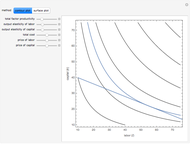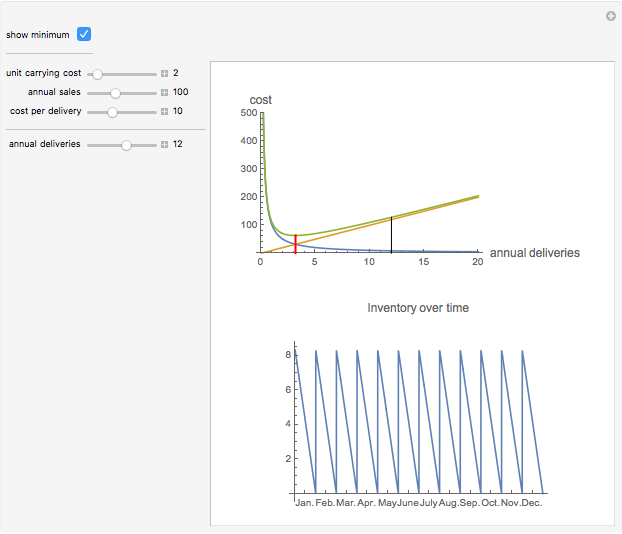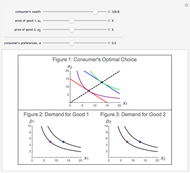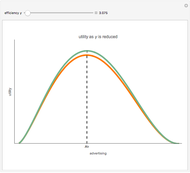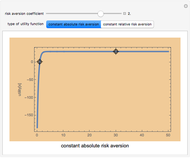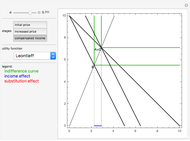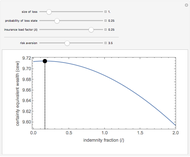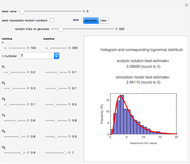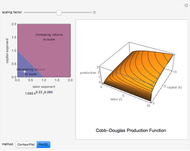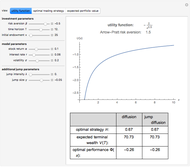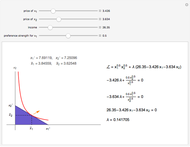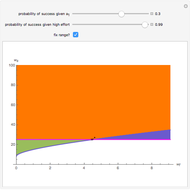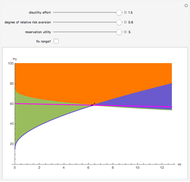Constrained Optimization: Cobb-Douglas Utility and Interior Solutions Using a Lagrangian

Requires a Wolfram Notebook System
Interact on desktop, mobile and cloud with the free Wolfram Player or other Wolfram Language products.
The blue shaded area represents the feasible bundles, those which are on or below the budget constraint, given by the dark violet line. The red curve represents an indifference curve for the individual; the orange arrow indicates the direction of increasing preference.
[more]
Contributed by: Randy Silvers (September 2012)
Open content licensed under CC BY-NC-SA
Snapshots
Details
The individual's optimal choice is a result of the tension between what is feasible, to the southwest, and what is desirable, to the northeast. Graphically, as long as the individual's indifference curve and budget constraint are not tangent, the individual could improve by trading off one good for the other. Thus, the optimal choice is on the highest indifference curve that has a feasible bundle, at the tangency.
Mathematically, the Lagrangian shows this by equating the marginal utility of increasing  with its marginal cost and equating the marginal utility of increasing
with its marginal cost and equating the marginal utility of increasing  with its marginal cost. These are the first two first-order conditions. The interpretation of the Lagrange multiplier follows from this. The third first-order condition is the budget constraint.
with its marginal cost. These are the first two first-order conditions. The interpretation of the Lagrange multiplier follows from this. The third first-order condition is the budget constraint.
Suggested exercise: Adjust the values of  ,
,  ,
,  , and
, and  one at a time, anticipating how the graph will change, and rewriting the Lagrangian and re-solving for the optimal bundle, the value of the Lagrange multiplier, and the resulting optimal utility level; in particular, increase
one at a time, anticipating how the graph will change, and rewriting the Lagrangian and re-solving for the optimal bundle, the value of the Lagrange multiplier, and the resulting optimal utility level; in particular, increase  by 1 and note the change in the resulting utility levels.
by 1 and note the change in the resulting utility levels.
Permanent Citation






